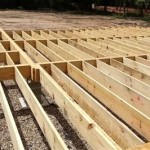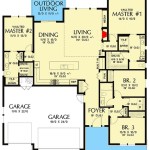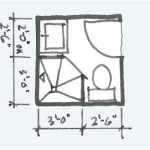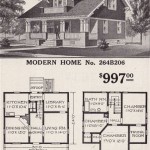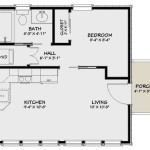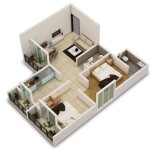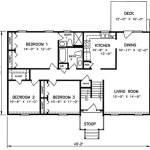1x2 Bathroom Floor Plans: Maximizing Functionality in a Compact Space
Designing a bathroom, especially a small one like a 1x2 meter (approximately 3.3ft x 6.6ft) space, requires meticulous planning and a keen understanding of spatial optimization. While seemingly restrictive, a 1x2 bathroom floor plan can be both functional and aesthetically pleasing with careful consideration of layout, fixtures, and design elements. The key lies in maximizing the available space and creating a comfortable, efficient environment.
This article explores various strategies for designing effective 1x2 bathroom floor plans. We will delve into different layout options, fixture selection considerations, and design tips to help optimize this limited space. The focus is on providing actionable advice applicable to both new construction and renovations.
Optimizing Layout in a 1x2 Bathroom
The layout is the cornerstone of any successful bathroom design, and it is particularly crucial in a 1x2 meter space. Several layouts can be considered, depending on individual needs and plumbing constraints.
Linear Layout: This is often the most straightforward and practical option for a narrow bathroom. In a linear layout, fixtures are arranged along one wall, typically with the toilet at one end, the sink in the middle, and the shower or bath at the other end. This configuration minimizes the need for complex plumbing relocations and maximizes the use of the available wall space. A benefit of the linear layout lies in its simplicity, making it relatively easy to implement and maintain. However, challenges may arise in creating adequate space between fixtures, particularly if a standard-sized toilet and sink are chosen.
Corner Shower Layout: If a shower enclosure is preferred over a bathtub, a corner shower can be a space-saving alternative. It positions the shower in one corner of the bathroom, freeing up wall space for the toilet and sink. This layout can create a more open feel compared to a linear arrangement that uses a full-length shower wall. Considerations for a corner shower layout include ensuring adequate space for the shower door to swing open without obstructing other fixtures and selecting a shower enclosure that fits proportionally within the limited square footage. Rounded or quadrant shower enclosures are often optimal as they minimize protrusion into the main bathroom area.
Wet Room Concept: A more modern approach is to embrace the wet room concept. This eliminates the need for a separate shower enclosure. Instead, the entire bathroom floor is waterproofed, with a slight slope towards a drain. This maximizes the usable space and creates a seamless, minimalist aesthetic. The wet room concept requires careful planning of waterproofing to prevent water damage and may necessitate a shower curtain or screen to minimize splashing. Ventilation is also critical in a wet room to prevent moisture buildup. A wall-mounted toilet and sink can further enhance the feeling of spaciousness in a wet room design.
Placement Considerations: Regardless of the chosen layout, several key placement considerations apply. The toilet should be positioned with adequate clearance around it for comfortable use. Building codes often specify minimum clearances. Furthermore, the sink should be located in a position that allows for comfortable access for washing hands and grooming. The placement of the drain and water supply lines should be factored in early in the planning process to minimize costly plumbing alterations.
Fixture Selection for Small Bathrooms
Selecting the right fixtures is paramount in a small bathroom. Opting for compact, space-saving models is crucial for maximizing functionality without overwhelming the available space.
Toilets: Wall-mounted toilets are an excellent choice for small bathrooms. They free up floor space, making the room feel larger and easier to clean. Compared to traditional floor-mounted toilets, wall-mounted models also offer adjustable height settings, providing greater flexibility for different users. Another option is a compact, short-projection toilet, which reduces the overall depth of the fixture. When selecting a toilet, it is essential to consider water efficiency and choose a model with a low-flow flush system to conserve water. Dual-flush toilets offer even greater water savings allowing the user to select a reduced flush volume for liquid waste.
Sinks: Similar to toilets, wall-mounted sinks are a space-saving option. They leave the floor underneath open, enhancing the feeling of spaciousness. Another alternative is a corner sink, which fits neatly into a corner of the bathroom, minimizing its impact on the overall floor area. Pedestal sinks can offer a classic aesthetic but typically lack integrated storage. Vessel sinks, mounted on top of a vanity or countertop, can be visually striking but may require careful consideration of countertop height to ensure comfortable use. Integrated sink and vanity units provide storage space while maintaining a compact footprint. The size and shape of the sink basin should also be considered to ensure adequate space for washing hands without excessive splashing.
Showers/Bathtubs: In a 1x2 meter bathroom, a full-sized bathtub is often impractical. A shower is usually the more space-efficient option. As previously mentioned, a corner shower stall can be a good solution. Another alternative is a walk-in shower, which eliminates the need for a shower door altogether, but requires careful consideration of water drainage and splash protection. If a bathtub is desired, a compact soaking tub or a Japanese-style deep tub may be an alternative, although these can be more expensive. Showerheads and faucets should be chosen with water efficiency in mind. Low-flow showerheads can significantly reduce water consumption without compromising showering experience.
Storage: Storage is often a challenge in small bathrooms. Wall-mounted cabinets and shelves are excellent options for maximizing vertical space. A medicine cabinet above the sink provides convenient storage for toiletries. Open shelving can create a more airy feel, but requires careful organization to avoid clutter. Recessed niches within the shower wall can provide storage for soaps and shampoos. Under-sink storage, in the form of a vanity unit or a small cabinet, is another useful option. Multi-functional furniture, such as a mirror with integrated storage, can also help to maximize space. Utilizing door-mounted organizers can also turn otherwise unused space like bathroom doors into a viable storage solution. Slim storage tower units can be placed next to the toilet if space permits.
Design Tips for Maximizing Space and Aesthetics
Beyond layout and fixture selection, several design elements can enhance the sense of space and create a more appealing bathroom environment. These elements focus on manipulating visual perception and optimizing functionality.
Color Palette: Light and bright colors are essential for making a small bathroom feel larger and more open. White, cream, and pastel shades reflect light, creating a more airy atmosphere. Using a monochromatic color scheme, with subtle variations in tone, can further enhance the feeling of spaciousness. Avoid dark colors, as they can make the room feel smaller and more enclosed. Accent colors can be used sparingly to add visual interest, but should not dominate the overall color scheme.
Lighting: Adequate lighting is crucial for creating a functional and inviting bathroom. Natural light is ideal, but often limited in small bathrooms. Maximize any available natural light by keeping windows clear and using translucent window coverings. Artificial lighting should include a combination of ambient, task, and accent lighting. Recessed lighting provides general illumination, while vanity lighting ensures adequate light for grooming. Accent lighting can be used to highlight architectural features or artwork. Consider using LED lighting, which is energy-efficient and long-lasting. Position lights strategically to eliminate shadows and create a sense of depth.
Mirrors: Mirrors are invaluable for creating the illusion of more space. A large mirror above the sink can visually double the size of the room. Consider using a frameless mirror to minimize visual clutter. A full-length mirror on a door or wall can further enhance the sense of spaciousness. Strategically placed mirrors can also reflect light, making the room brighter and more inviting. Consider an illuminated mirror to serve as both a mirror and a primary light source above the sink.
Tile and Flooring: The choice of tile and flooring can significantly impact the overall look and feel of the bathroom. Large tiles can make the room feel larger than smaller tiles. Light-colored tiles are generally preferable, as they reflect light and create a more open atmosphere. Consider using a consistent tile throughout the bathroom, including the walls and floor, to create a seamless look. Non-slip flooring is essential for safety. Porcelain and ceramic tiles are durable and water-resistant, making them ideal choices for bathroom floors. Consider installing radiant floor heating for added comfort, especially in colder climates.
Accessories and Décor: Keep accessories and décor to a minimum to avoid cluttering the space. Choose functional accessories that serve a purpose, such as a towel rack, a soap dish, and a toothbrush holder. Wall-mounted accessories can save valuable counter space. Consider adding a few small plants to bring life and color to the bathroom. Avoid overly ornate or bulky décor items, as they can overwhelm the small space. A simple, minimalist aesthetic is generally the most effective approach.
Ventilation: Proper ventilation is critical for preventing moisture buildup and mold growth. Install a high-quality exhaust fan that is sized appropriately for the bathroom. Ensure that the fan vents to the outside of the house. Consider using a humidity-sensing fan that automatically turns on when moisture levels are high. Proper ventilation is essential for maintaining a healthy and comfortable bathroom environment.

Plan 85358 With 1 Bed 2 Bath

Designing A Powder Room Or 1 2 Bath With Floor Plans

Pin Page

Powder Room Floor Plans

Cottage Style House Plan 2 Beds 1 Baths 856 Sq Ft 14 239

Medium Rectangular Bathroom Layouts And Floor Plan Ideas
%20(1).jpg?strip=all)
10 Essential Bathroom Floor Plans

Modern Style House Plan 2 Beds 1 Baths 1232 Sq Ft 518 8

Master Bathroom Floor Plan Layout And Design Ideas

Simple 2 Bedroom 1 Bath Cabin 1200 Sq Ft Open Floor Plan With Covered Front Porch

